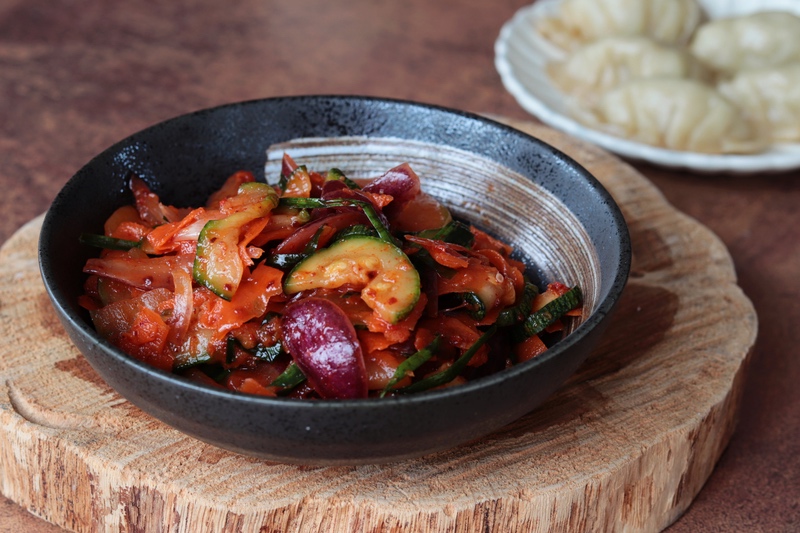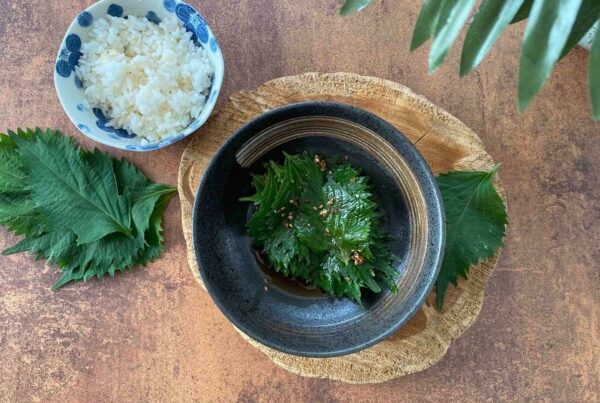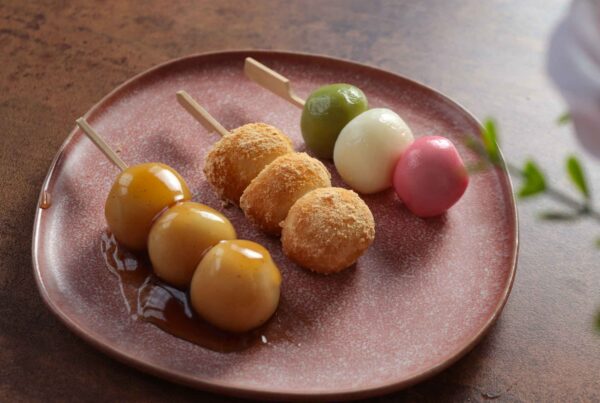
Crispy, sweet-and-salty vegetables that will ignite your taste buds. (Almost) literally. If you can handle slightly spicy food, this will still not be for you. Although the question of spiciness is relative, right? This delicacy pairs best with white rice, and you can enjoy it right after you prepare it. It doesn’t ferment, so there’s no need to wait for it.
Is Japanese cuisine spicy?
Japanese cuisine is not generally known for being very spicy, unlike some other Asian cuisines that are definitely much spicier. I would even say that it makes quite a bit of use of sugar in cooking and dishes.
However, that doesn’t mean we can’t find spicy ingredients or dishes in Japanese cuisine, even though many of them are originally of Chinese origin. For example:
- Wasabi: Perhaps the most famous spicy ingredient. Although I would say it has a slightly different spiciness compared to chili—more of an “attack” on the nose with a short, sharp burn that quickly fades.
- Shichimi togarashi: A blend of seven spices, including chili.
- Rayu: Spicy chili oil that originates from China. It is used, for example, in the dipping sauce for gyoza.
- Karashi: Japanese mustard that is much sharper and spicier than classic European mustard.
Among dishes, the most famous is probably Japanese curry, known as kare (カレー). It can be prepared with various levels of spiciness. I think in Japan you would also find restaurants that offer different spicy versions on a scale from one to ten.
Korean Gochujang Paste
In the recipe, the key ingredient is the traditional Korean paste gochujang, which is made from fermented red pepper, glutinous rice flour, soy flour, and salt. However, there are many variations and recipes today that may contain other types of flour.
Gochujang has a medium to high level of spiciness that varies depending on the brand and recipe. It has a thick, sticky consistency, making it an excellent addition to sauces, marinades, and soups.
Can other vegetables be used in the recipe?
In the recipe, I use zucchini. Yes, zucchini can be eaten raw. You can also use kohlrabi or cucumber (just remove the watery middle part with the seeds), but personally, I find zucchini or kohlrabi better in this case.
How long does the vegetable last?
In a well-sealed container, it can last up to 5 days in the refrigerator. I recommend using a glass container, which will not absorb the aroma of garlic or the red color of Korean chili paste.
Interested to discover more about Japanese cooking? Let’s keep in touch on Instagram, Facebook, and Pinterest.
Sharing is caring:

Spicy vegetables Korean-style
Video
Ingredients
- 1 bigger zucchini (mine was 373 g)
- 1 carrot (mine was 110 g)
- 1 red onion (mine was 73 g)
- 5 pieces of nira (chinese chive)
- 2 leveled teaspoons of salt
For the spicy sauce:
- 10 g garlic
- 30 g sugar
- 2 tbsp kombu vinegar (or regular one)
- 6 g chilli flakes
- 25 g gochujang
- 2 tbsp sesame oil
Instructions
- Cut the zucchini lengthwise and then slice it into wedges about this thick (up to 5 mm max). If you have a larger zucchini (cucumber) with a bigger core, cut out the core.

- Peel the carrot and either slice it thinly or use a peeler to easily make thin shavings like this.

- Also, cut the onion into smaller wedges. I left mine a bit thicker, but you can slice it thinner if you prefer.

- I cut the Chinese chives into approximately 5 cm pieces.

- Place all the chopped vegetables into a bowl, add two teaspoons of salt, and mix and squeeze the vegetables by hand until they soften and release some juice. Set aside and prepare the sauce.

- In a bowl, mix the minced garlic, sugar, vinegar, chili, gochujang, and sesame oil.

- Squeeze the water out of the vegetables, as it would dilute the sauce, and only then add the sauce to the vegetables. Mix everything thoroughly. It's best to do this by hand, but be sure to wear gloves.

- You can eat the vegetables right away, but they taste even better if they sit for a few hours.

Itadakimasu! [itadakimas]



